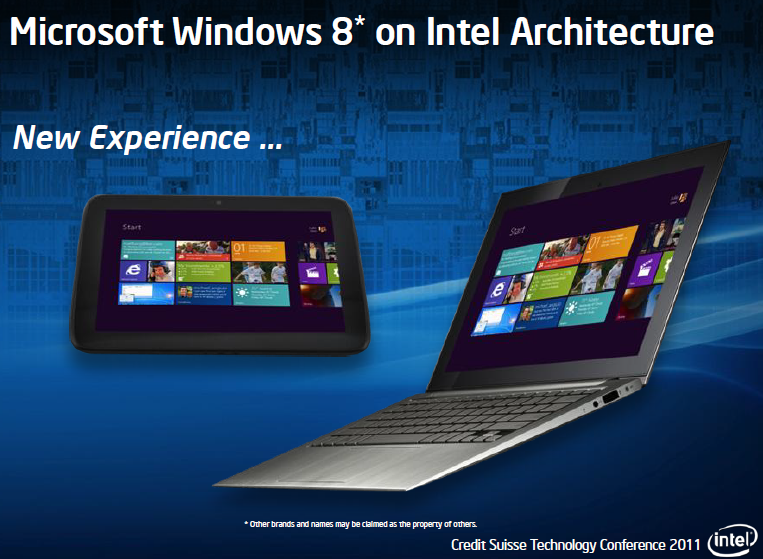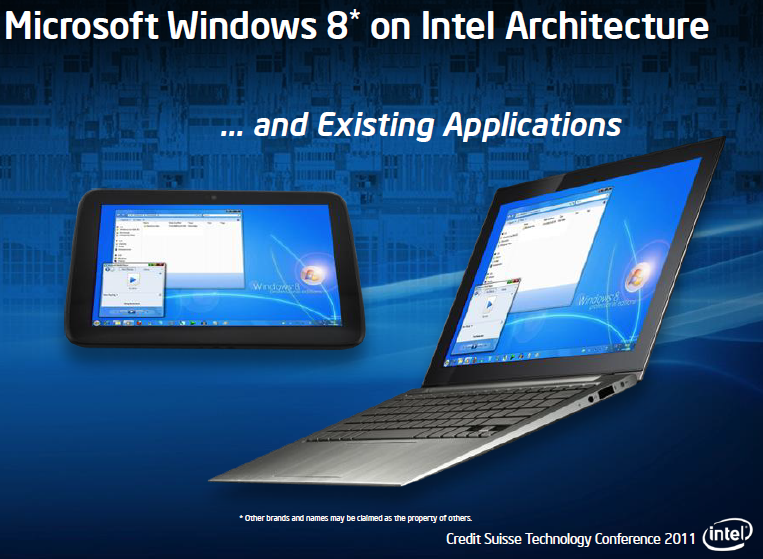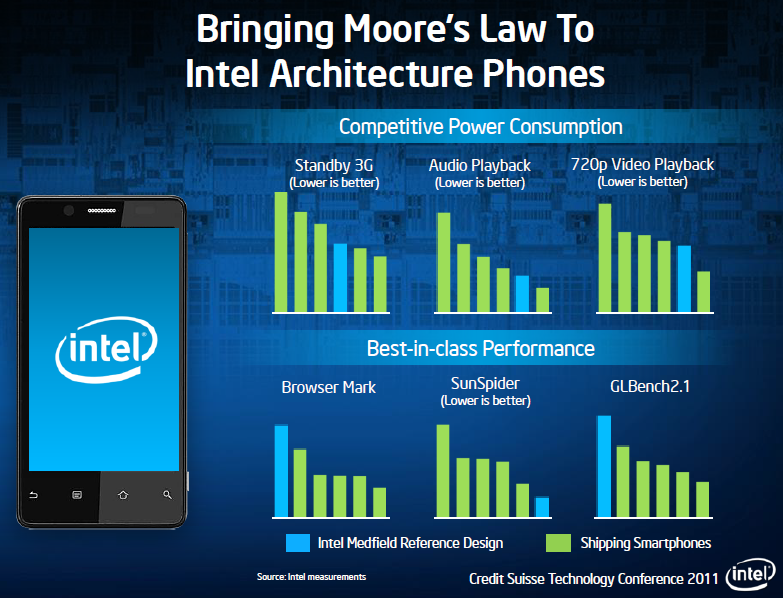That Paul Otellini is excited over Windows 8 is a bit of an understatement. Intel’s VP has said that Windows 8 is one of the best things that happened to Intel, and scrap the myths that ARM is a threat to Intel, or that it can’t make mobile circuits.
The last year has been a revelation to many that has now realized the that the PC industry is changing. All PC makers have started projects and spent loads of resources for a coming mobile era, which we are just about to enter.
ARM is no threat
Many analysts believe that Windows 8 together with ARM (WoA) is a threat to the x86-centered market, and also Intel has been questioned if it can keep with the development. Company VP Paul Otellini confidently rejects all myths.. He says that ARM is not a threat against Intel, that the PC market is still blooming and that it can indeed make circuits for ultramobile devices. Even if Windows 8 will support ARM he beleives consumers and companies will prefer x86 solutions.
“We are very excited about Windows 8. I think it’s one of the best things that’s ever happened to our Company. And it’s a very good operating system, not just for PCs, but we think also will allow tablets to really get a legitimacy into mainstream computing, particularly in enterprises that they don’t have today. A lot of the enterprise managers are worried about security, they’re worried about the difficulty affording their legacy applications over to an Android tablet or to an iPad.”
 |
 |
What Intel will offer with its backwards compatible solution is something that will become an obstacle for ARM. Few companies like the idea of having to rewrite their software for a new architecture, and this also goes for many retail applications. Windows 8 will offer two very important functions, the new: Metro and the old: the classic desktop – båda parts that Intel and x86 will really take advantage of.
PC market is not dead – just foul
Paul Otellini continues with saying that the PC market is definitely not dying, just foul. The last few years have been spent trying to make the PC cheaper and remove functions to reduce prices. This has paved the way for other home electronics, like tablets, enabling them to offer a better experience. Intel’s goal is to redefine the PC and make it interesting again, which it hopes to achieve with the Ultrabook.
“It’s an initiative that we call, Ultrabook. This is about thinner, sleeker, faster, more responsive PCs, longer battery life, more secure, but also at a mainstream price point. The Apple MacBook Air has been out for several years now, but it’s a high — it’s a premium priced device.”
Next year we will see Intel’s first smartphones
Even though intel will continue to work with PCs where it has its roots it intends to move into smartphone territory, which is currently ARM’s market. He says that all circuit manufacturers are developing circuits and the choice of components – like network circuits for 3G and 4G – in a platform that it then locks for the telephone manufacturers to use. Next year we will see several smartphones with Intel’s circuits inside. It has compared the Medfield platform to five top-selling high-end phones:
 First generation Medfield contains one Atom core and unknown graphics circuit
First generation Medfield contains one Atom core and unknown graphics circuit
As for power consumption the platform looks to do well in the comparison, but it tops the performance charts. This is most likely due to that the phones sporting older Cortex-A9, but in GLBench 2.1 the graphics circuit is the most important. Intel has not revealed which graphics circuit is being used. It will be interesting to see how Intel will compete against Qualcomm’s coming Krait architecture and Cortex-A15 that will arrive next year.
Intel has great plans before 2012, and even though the ARM architecture looks promising it doesn’t look like it will get an easy way in on the PC market. The same goes for intel that is trying to break into the smartphone market. We discussed Intel and the smartphone market with Pat Bliemer in our lengthy interview during Dreamhack, we will share more of this in detail soon.
Source: ZDNet















